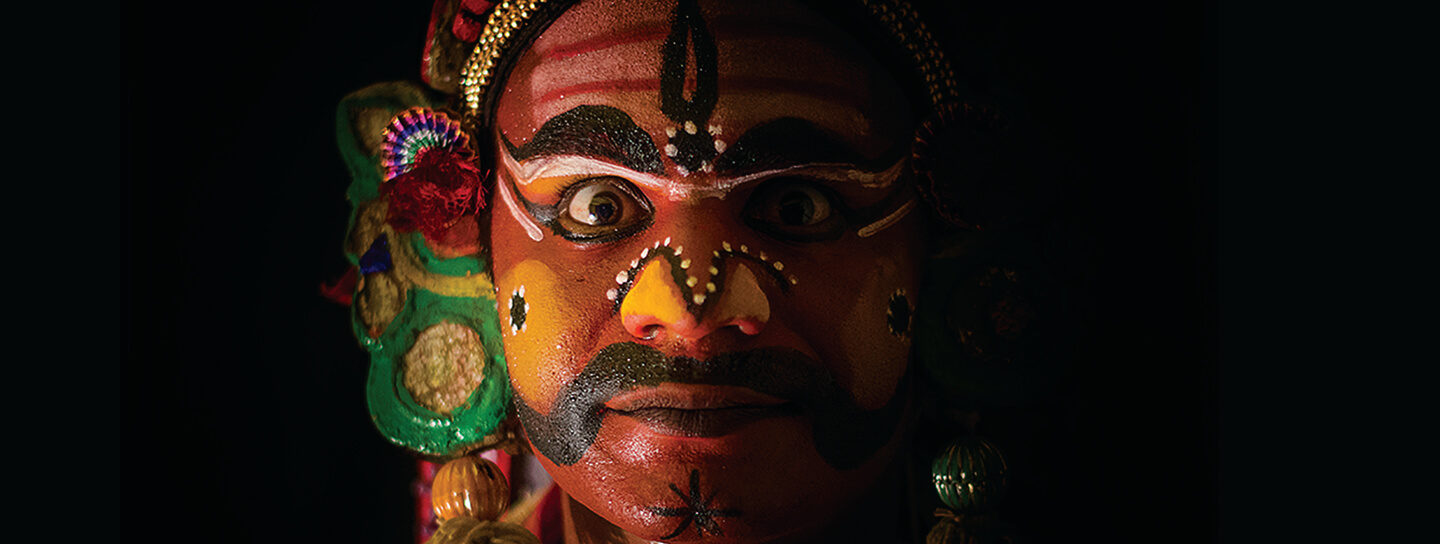It could not have been easy being Vibhishan. For many he is the symbol of a traitor because he abandoned his elder brother Ravan, the king of Lanka, at a time of war and then joined the opposition. In the Ramayana the actions of Vibhishan raise the moral question of what is more important – duty and loyalty or following your conscience and doing what is right.
Vibhishan arrived in Rameswaram after struggling with his conscience and then deciding that one cannot be loyal to a brother whose actions were not just immoral but also cruel and inhumane. Vibhishan chose what we call our dharma.
When Ravan abducted Sita, he took her by force to Lanka and kept her imprisoned in a grove of ashoka trees. It was not the action of a king but of a criminal but Ravan, king of the rakshasas, was both unrepentant and defiant.
We have an image of all rakshasas being evil but that is not true. The problem begins with the words ‘rakshasa’ and ‘asura’ being translated as demon in English. Demons are always evil but in our mythology rakshasa and asura were tribes who opposed the Aryan gods. The asuras opposed them in heaven and the rakshasas on earth. So they are shown as being both good and evil, for example Ravan’s father was a Brahmin sage who married his mother who was a rakshasa woman.
When Ravan refused to let Sita go, many rakshasas joined Vibhishan to protest. Among them were Ravan’s queen Mandodari, his grandfather Malyavan and even one of his generals, Prahasta. Then when Kumbhakarna was woken up so that he could go and fight, even he told his brother that there was still time to send back Sita and avoid further bloodshed. Ravan of course refused to listen.
So the brothers Vibhishan and Kumbhakarna faced the same moral dilemma – should they remain loyal to their brother and fight Lord Ram even though it was wrong? They chose opposite paths. Kumbhakarna protested but still went out to fight and was killed. Vibhishan chose to leave Lanka and go and meet Ram.
In Rameswaram, Sugreev the king of the Vanars was standing by the sea when he saw a rakshasa come flying across the sky from Lanka. He immediately called his soldiers and the moment Vibhishan landed on the beach he was captured and taken to Ram and Lakshman. The Vanar warriors like Sugreev and Angad were convinced Vibhishan was a spy and they did not believe he had come to support Ram.
Then Hanuman spoke up. He said that when he secretly entered Lanka in search of Sita he was captured and taken before Ravan. Everyone wanted to kill him except for Vibhishan who spoke up for him. He had reminded Ravan that Hanuman had come to Lanka as a messenger of Ram and the rules of diplomacy said that an envoy from another king could not be killed. So Hanuman’s life was spared even though they did set his tail on fire!
In Rameswaram, the spot where Vibhishan was welcomed by Ram and Hanuman, now has an ancient shrine – the Kodandarama Temple. In the garbha griha there are images of Ram, Sita and Lakshman with Hanuman and Vibhishan. Later, after the battle, Vibhishan was crowned as the king of Lanka here.
People who do not like Vibhishan say that he acted out of self interest. He knew that Ram would be victorious and he chose to join the winning side so that he could become the next king of Lanka. Others feel he was a brave man who had the courage to defy a powerful brother and risk his own life to do what was right.
At Rameswaram Lord Ram and Hanuman saw the good in Vibhishan and maybe we should also do the same.
Researched by Daiwik Hotels.


